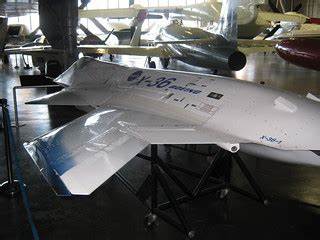
In the dynamic realm of aerial combat, agility and survivability are crucial. The pursuit of innovation in these fields has resulted in substantial advancements within the aerospace industry.

A shining example of such progress is encapsulated in the history of the NASA/Boeing X-36 Tailless Fighter Agility Research Aircraft. This program, concluding with a 31-flight research endeavor in 1997, demonstrated advanced agility and survivability characteristics that would influence the design of future fighters.

The research didn’t end there; in 1998, the RESTORE flights exhibited the potential of neural-net software to adapt to in-flight damage to control surfaces, marking a leap forward in aircraft resilience.

The X-36’s journey began with its first flight on May 17, 1997. Over the course of the program, this remotely piloted aircraft achieved remarkable feats, including a maximum altitude of 20,200 feet and an unprecedented 40-degree angle of attack.

These technical achievements translated into valuable data on maneuverability and potential applications for next-generation fighter aircraft.

Its tailless design was not just for aesthetic appeal; it signified a reduction in radar signature, adding to a fighter’s stealth capabilities.

The X-36’s achievements are situated within the broader context of NASA’s experimental X-plane programs that have continually pushed the boundaries of aviation.

These programs, often characterized by their high-risk, high-payoff nature, have yielded technology that influences both military and civilian aerospace applications.

The X-36 and the experimental flights that followed are testaments to these efforts, demonstrating that with every calculated risk comes the potential for substantial reward.

It’s essential to note that the X-36 was not an isolated project but part of a lineage of experimental aircraft, each contributing to a cumulative wealth of aeronautical knowledge.

For instance, the X-43A Hypersonic Experimental Vehicle, another program under the X-plane series, achieved unprecedented speeds in 2004 using scramjet technology. Such feats demonstrate a relentless pursuit of speed, efficiency, and innovation that continues to define aerospace research.

Looking back on these milestones, it becomes apparent that the pioneering spirit which drove the X-36’s development still pulses through the veins of contemporary aerospace projects.

From the X-59’s endeavors to normalize supersonic commercial travel to the X-57 Maxwell’s exploration of electric propulsion, the X-36’s legacy is vivid and enduring. Each X-plane serves as a building block toward a future where air travel is faster, more efficient, and more resilient than ever before.

The X-36’s story is not just about a successful research program; it’s a narrative of progress, a glimpse into the future of aerial combat, and a tribute to the ingenuity that propels aeronautical innovation.

As we look to the skies, the lessons learned from the X-36 and its descendants continue to shape the contours of the aerospace industry, ensuring that the skies remain a theater of technical marvel and strategic superiority.
Relevant articles: – 43A Hyper, nasa.gov
– Planes at Armstrong, nasa.gov
– The Quiet Little Life of NASA’s QSRA, flyingmag.com

